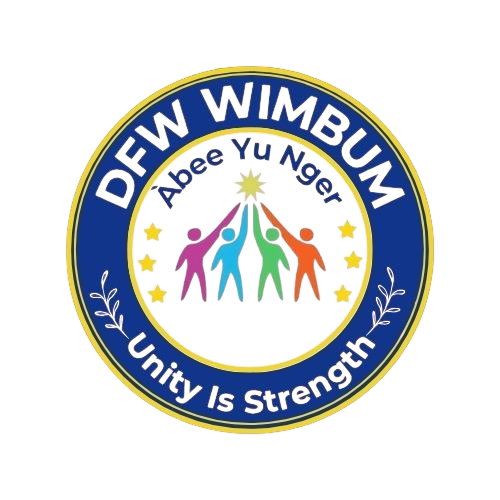Mkung Dance in the Wimbum Culture: History and Cultural Significance
The Mkung dance is a traditional dance of the Wimbum people, an ethnic group predominantly found in the Northwest Region of Cameroon, particularly in Ndu, Nkambe, and surrounding areas within the Donga-Mantung Division. Like many traditional dances in African societies, Mkung is deeply woven into the cultural, spiritual, and social fabric of the Wimbum people.
- Historical Roots of the Mkung Dance
- Cultural Significance
- Elements of the Dance
- Modern Context
- Symbolism
Ancestral origins: The Mkung dance is believed to have ancient roots, passed down orally and practiced for generations. It has been closely associated with rites of passage, celebrations, and communal gatherings. Warrior tradition: Historically, Mkung was performed by young men, especially warriors, as a form of display of strength, agility, and readiness. It often served to motivate warriors and intimidate enemies, acting as a psychological tactic during inter-tribal conflicts. Male initiation rites: The dance was also part of initiation ceremonies that marked the transition of boys into adulthood. It was used as a test of stamina and discipline and symbolized acceptance into the adult male community.
Community bonding: Mkung is a communal event, bringing people together during festivals, funerals of elders, or harvest celebrations. It emphasizes unity, collective identity, and respect for tradition. Spiritual element: The Mkung dance often carries spiritual significance, invoking the presence of ancestors and protective spirits. The dancers may wear special costumes, and the music typically includes drums, flutes, and gongs, creating a trance-like rhythm that connects the community with its spiritual heritage. Masculinity and leadership: Participation in the Mkung dance is seen as a sign of masculinity, courage, and leadership potential. It is sometimes used to showcase individuals for chieftaincy titles or other traditional responsibilities.
Costume: Dancers often wear raffia skirts, beaded ornaments, and sometimes face paint or masks, depending on the occasion and the depth of ritual involved. Music and instruments: Central to the dance are traditional instruments like the talking drum (ntul), gong (ngong), and horns, which communicate rhythm and messages during the performance. Movements: The dance features vigorous stamping, jumping, and synchronized movements symbolizing strength and harmony. It often involves circling formations, a symbol of unity and continuity.
Cultural festivals: Today, the Mkung dance is often performed during events like the Ngam Ngonso festival or Fons' enthronement ceremonies, serving as a reminder of Wimbum heritage. Youth revival efforts: While some aspects of the dance have faded due to modernization and religion (especially Christianity), there are ongoing efforts by Wimbum youth associations and cultural groups to revive and preserve the tradition through competitions, workshops, and documentation.
Circle dance: Represents the eternal bond of the community and the ever-present spirit of ancestors. Drums: Signify the heartbeat of the people and are believed to carry messages to the spirit world. Raffia and natural costumes: Reflect the community’s connection with nature and simplicity of traditional life.
Conclusion
The Mkung dance is more than just an art form. It is a living archive of the Wimbum people’s history, values, and identity. Its preservation is crucial not just for cultural pride, but for fostering intergenerational continuity and educating younger generations about their rich heritage.



